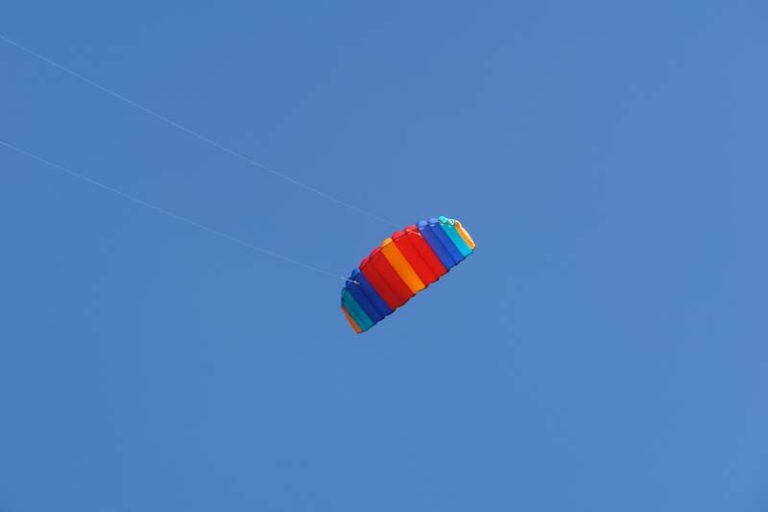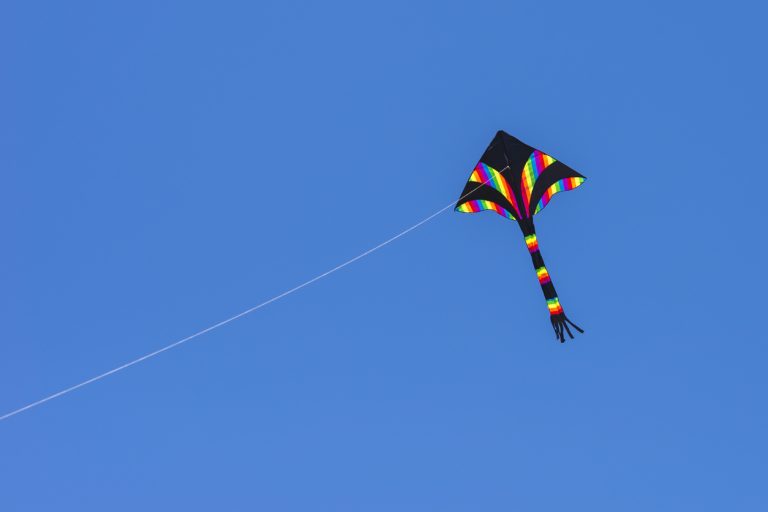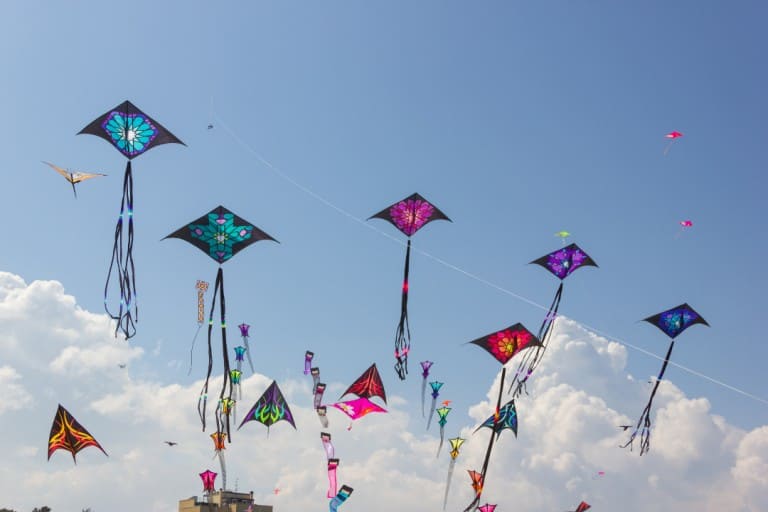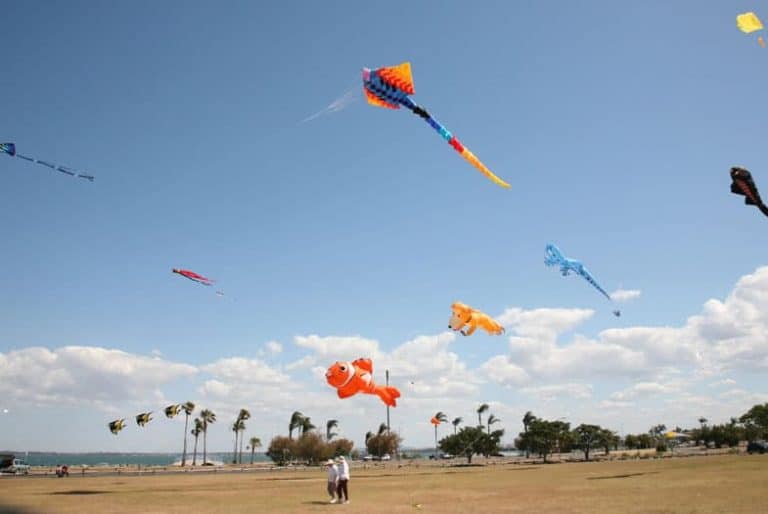5 Reasons Why Flying A Kite Is Hard
Kite flying provides great enjoyment and satisfaction to both adults and children. However, this process can be frustrating for those who find kite flying hard. This article offers insight into why this exciting sport seems difficult for others.
Using the wrong kite, not understanding flying techniques, poor wind conditions, choosing the wrong location, and equipment assembly mistakes are all factors that can make kiting more difficult. You can fix all of these with practice and good information.
Luckily you can find the needed info right here!
Reasons Why Flying A Kite Can Be Hard
- Choosing The Wrong Kite
- Poor Wind Conditions
- Poor kiting location
- The technique used in launching
- Kite Assembly And Adjustment
Choosing The Wrong Kite
Without the correct information, it’s easy to pick kites, which will result in difficulty when launching them. While 3D kites look great, they aren’t ideal for beginners. Instead, they should opt for delta kites. They are easy to assemble, but they are also easy to launch and fly (Source).
Delta kites are triangular in shape. They also have a keel that keeps the kite spine straight and rigid. It also ensures kites are stable when launched. It’s among the popular kites because of its ease of use and ability to fly in light winds.
There are a variety of kites in the market, all designed for different purposes. Unlike the delta kites, others require finesse and skill.
These include stunt kites with more than two lines. Some kites are heavier, which makes flying them more difficult.
Poor Wind Conditions
Not every day is ideal for kite flying. Wind plays an essential role in the ease and successful performance of kiting. Going in with little or too much wind could result in unnecessary difficulty.
The amount of wind required is dependent on the kind of kite one has. Heavier kites require more wind. Most kites, however, are built to sustain average winds of 4-10ph (Source).
If one feels the wind on their face, it’s likely adequate for kiting. Another way to visually measure if the wind is enough is if flags are waving and leaves are rustling.
Sir Francis Beaufort, a Britain admiral, developed the Beaufort Wind Scale in 1805. The wind scale was meant to assist sailors in estimating winds through visual observations. This tool was and still is crucial because it doesn’t require instruments to estimate wind power (Source).
Using the scale, successful kiting occurs at force three and force 4.
| Force 3 | 8-12mph | Gentle Breeze | Leaves and small twigs in constant motion; wind extends light flag |
| Force 4 | 13-18mph | Moderate Breeze | Raises dirt and loose paper; small branches move |
Another way of establishing wind speed is by checking the forecast on weather apps on phones or computers. Flying at the beginning and end of daylight hours should be avoided as these times tend to have light and variable winds (Source).
While kites require wind to fly, the introduction of indoor kites has shifted this narrative. For them to fly, indoor kites need no wind except ‘apparent wind,’ which you can generate by walking.
Poor Kiting Location
Understanding kiting means understanding that location can make or break your kiting session. Where one flies a kite directly impacts the outcome. If you experience difficulty when attempting to fly, the poor location could be a factor.
Kites respond positively to adequate room. The larger the space, the greater the response. Therefore, an area free of obstacles such as houses, hills, trees, and power lines is ideal. Beaches, parks, and farm fields should be considered (Source).
When the wind goes around obstacles such as houses, the wind gets bumpy. People also refer to this bump as turbulence. While turbulence is invisible, it’s hard to fly kites in it. Kites also get drawn into obstacles such as trees and may crash.
As a precaution, you should fly kites in areas where they won’t create hazards. Therefore, you should avoid roads and power lines. Also, flying in lightning or rain is dangerous and can result in injury or worse.
It would be best if you always observed local air safety regulations. It includes steering clear of air traffic patterns close to airports (Source).
The Technique Used In Launching
Running is unnecessary when flying a kite. Yet, this is a common trait by novice kite flyers. It makes kiting look harder than it actually is. All one really needs is the proper technique with the right wind conditions.
For example, when flying a single-line kite, one should start by facing away from the wind. It should then be held by the bridle until it catches wind. You should follow it up by letting out some line (Source).
The line should be tout and not slack. The line should also have a bit of pull for the kite to point up. This positioning will assist the kite in climbing higher.
If the wind is light, one could ask for help from a friend. They should walk downwind about 50-100 feet from you while holding the kite. You should follow it by holding the kite in the air while it’s in front of them.
When the wind picks up, they should release it. The line should be pulled hand over hand when the kite goes up till it’s stable.
While running is fun, it’s not intelligent with scissors or a kite. One cannot watch where one is headed and watch the kite simultaneously. Therefore, the chances of you or the kite crashing are high (Source).
Kite Assembly And Adjustment
Improper kite assembly can result in difficulty when launching the kite. You can adjust most kites to suit different winds; flying can have significant problems when you don’t make the proper adjustments.
The safest start with sports kites is completely laying out the kite and the lines. You should then check all parts and lines and ensure that tails are straightened.
Why Is Flying A Kite Hard?
The wind is a necessity when flying kites outdoors. It is the power source that keeps them afloat. When the wind is too little, it can be challenging to keep the kite afloat or even launch it. On the other hand, it’s easy for the kite to launch in the air with too much wind. However, it’s also easy to watch your kite get damaged.
Other days are ideal for kite flying, and others are not. Some winds will allow for steady kite flying while others won’t.
People construct kites differently. Some are too light and others too heavy. Such conditions result in in-flight issues. It includes the kite flying too high or low, leaning too much on the right or left, or turning and diving to the ground.
Using the right kite for the right conditions, checking the forecast, and using the correct flying line are all possible solutions to the difficulty of kite flying.
What Are The Disadvantages Of Flying Kites?
Kites were instrumental in researching the Wright brothers’ first airplane in the 1800s. People developed several designs. While many glorify the equipment for the changes they have brought, they also have disadvantages.
Some have associated kite flying with several safety issues. The lines can tangle on power lines resulting in blackouts and possible electrocution of kite flier. The lines also act as conductors for lightning in stormy weather. Additionally, giant kites can lift kite fliers off the ground (Source).
Kite lines that are misused can lead to the injury of people and property. For example, tensed lines can behave like razors, and lines can easily cut flesh by moving lines.
Fighter kites can easily result in death. Such concerns caused the government of Egypt to ban kite flying in 2020. Ninety-nine kites were seized in Alexandria and 369 in Cairo.
According to the BBC, while kite flying seems harmless, it can be highly detrimental. For example, a man and two children died after glass-coated kite strings slit their throats (Source).
Kite flyers should avoid injury to people and property. It is because kite operators are fully responsible for damages caused by their kite systems (Source).
What Forces Act On A Kite?
Four forces act on a kite, and these are the flight forces. They include drag, thrust, weight, and lift. These same affect airplanes and other flying objects (Source).
Lift is an upward force that pushes the kite up. Weight is a downward force that pushes the kite towards the earth’s center. Thrust propels the kite forward. On the other hand, drag is a backward force that acts opposite to thrust.
For the kite to remain steady, all four forces need balancing. The lift should be equal to the weight, and drag should equal the thrust.
Summary
Significant factors that influence kite flying success are location and wind speed. Areas with obstructions cause turbulence making it challenging to fly kites. These include houses, trees, and hills.
Kites also behave differently in light and strong winds. The ability to detect conditions on a specific day determines how the kite flying will go.






